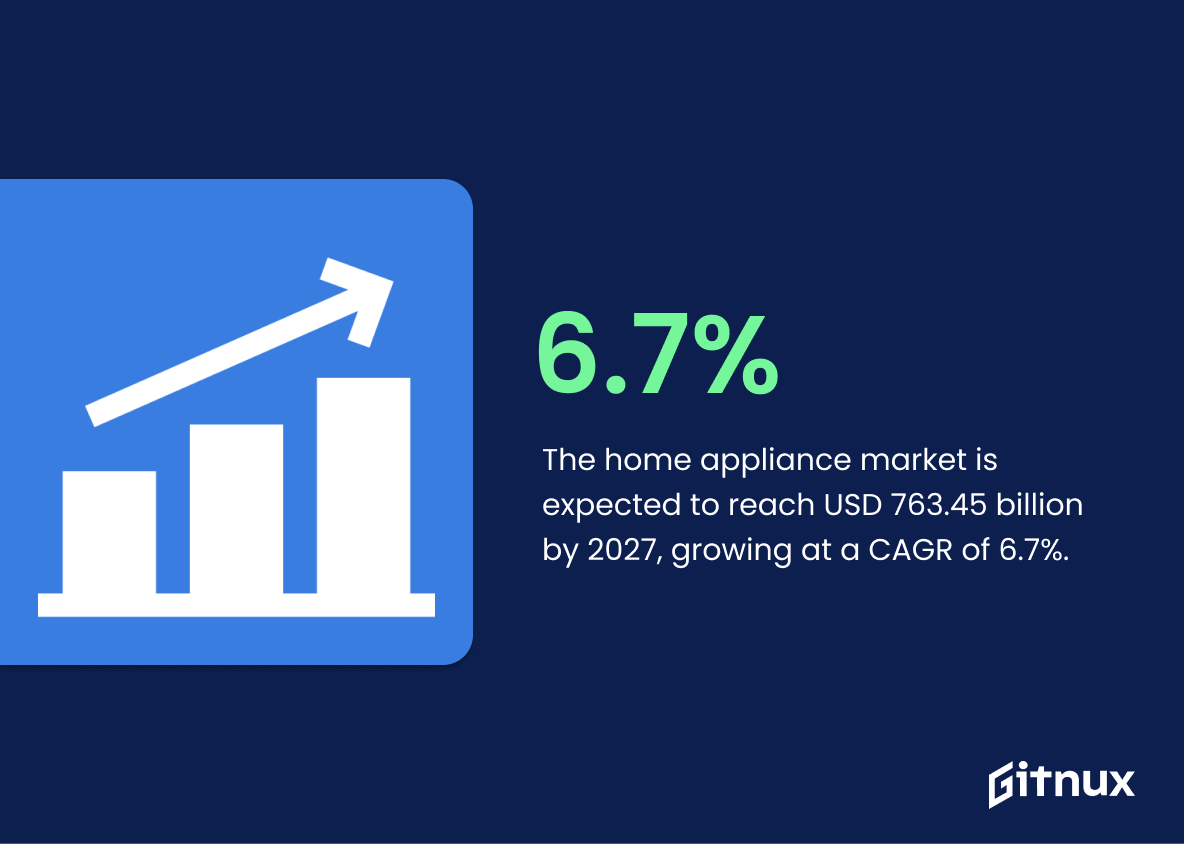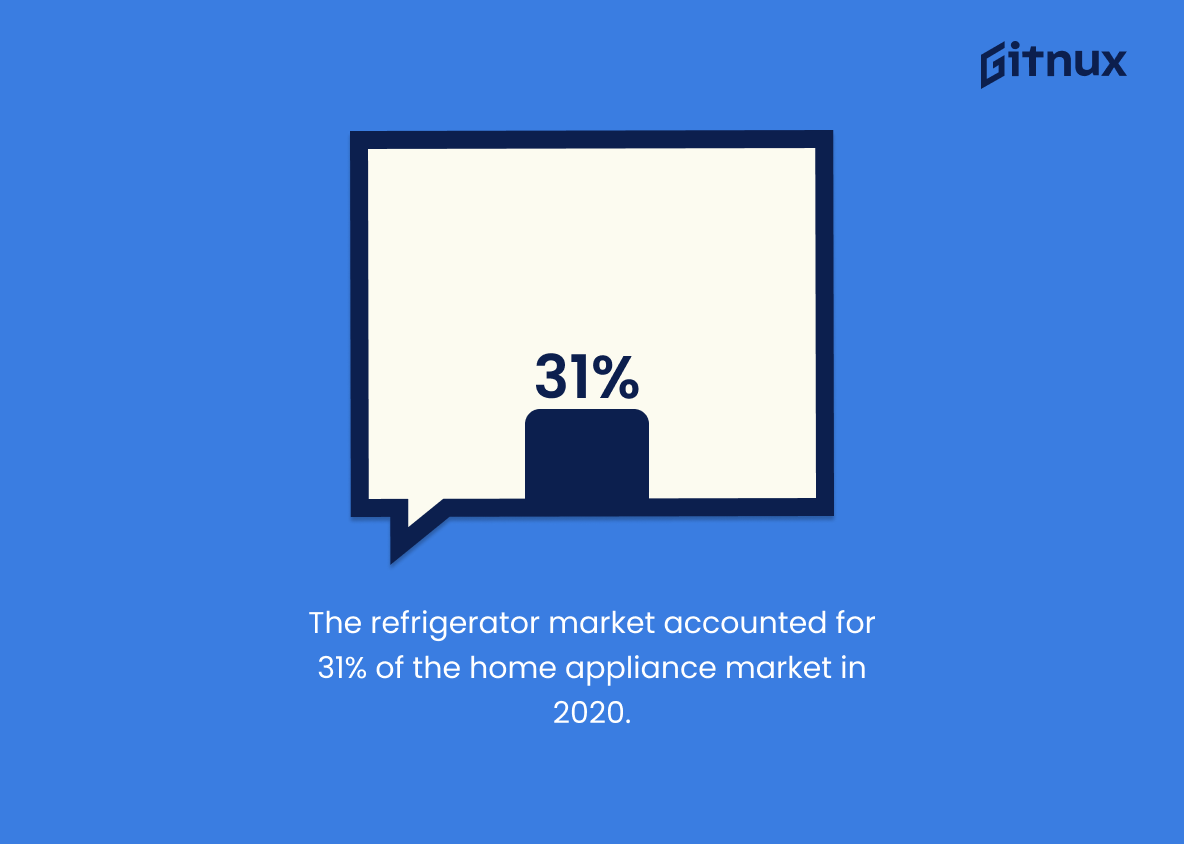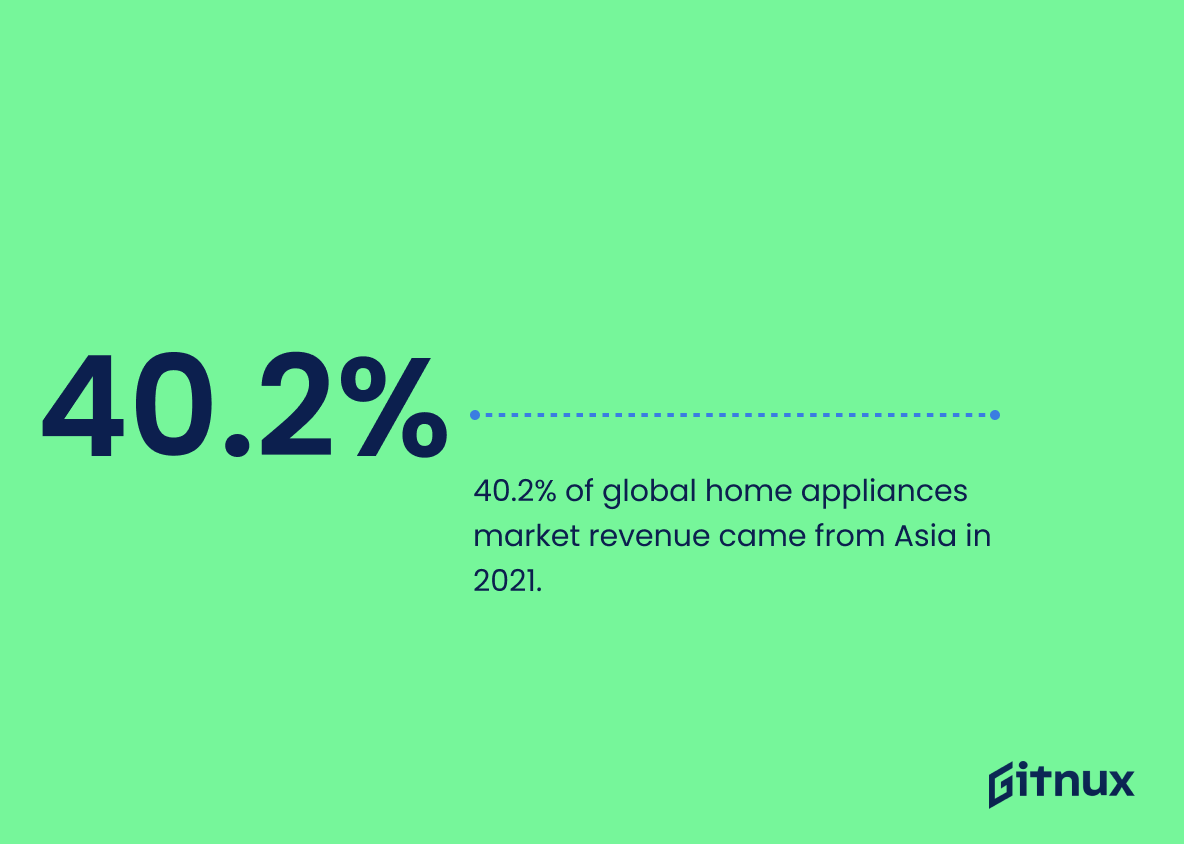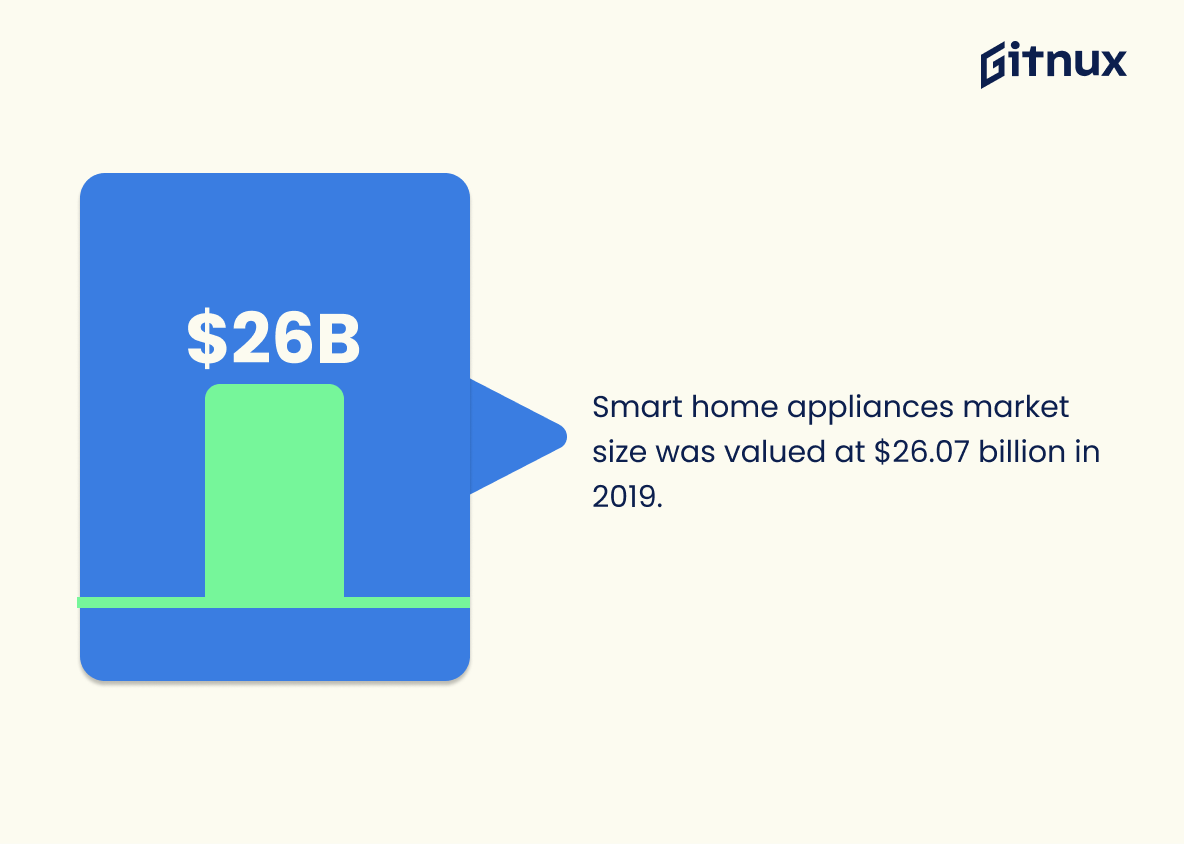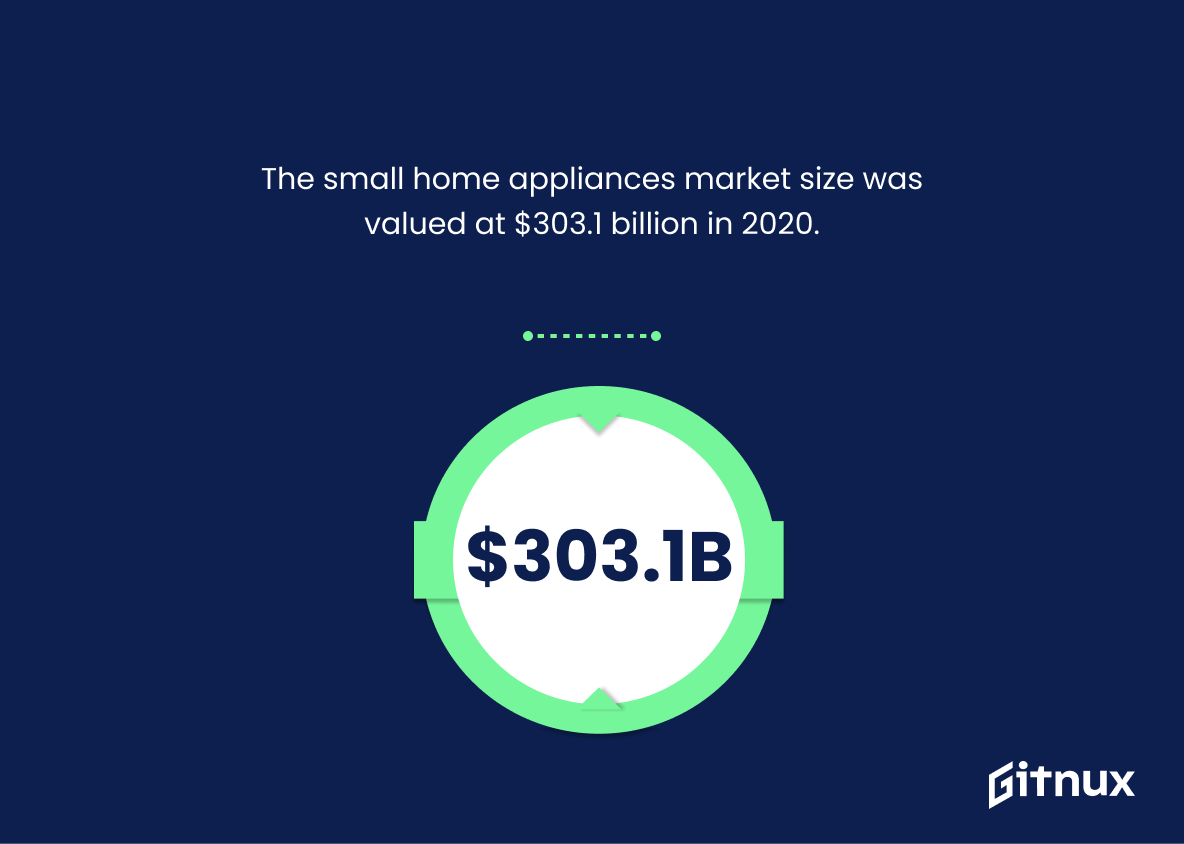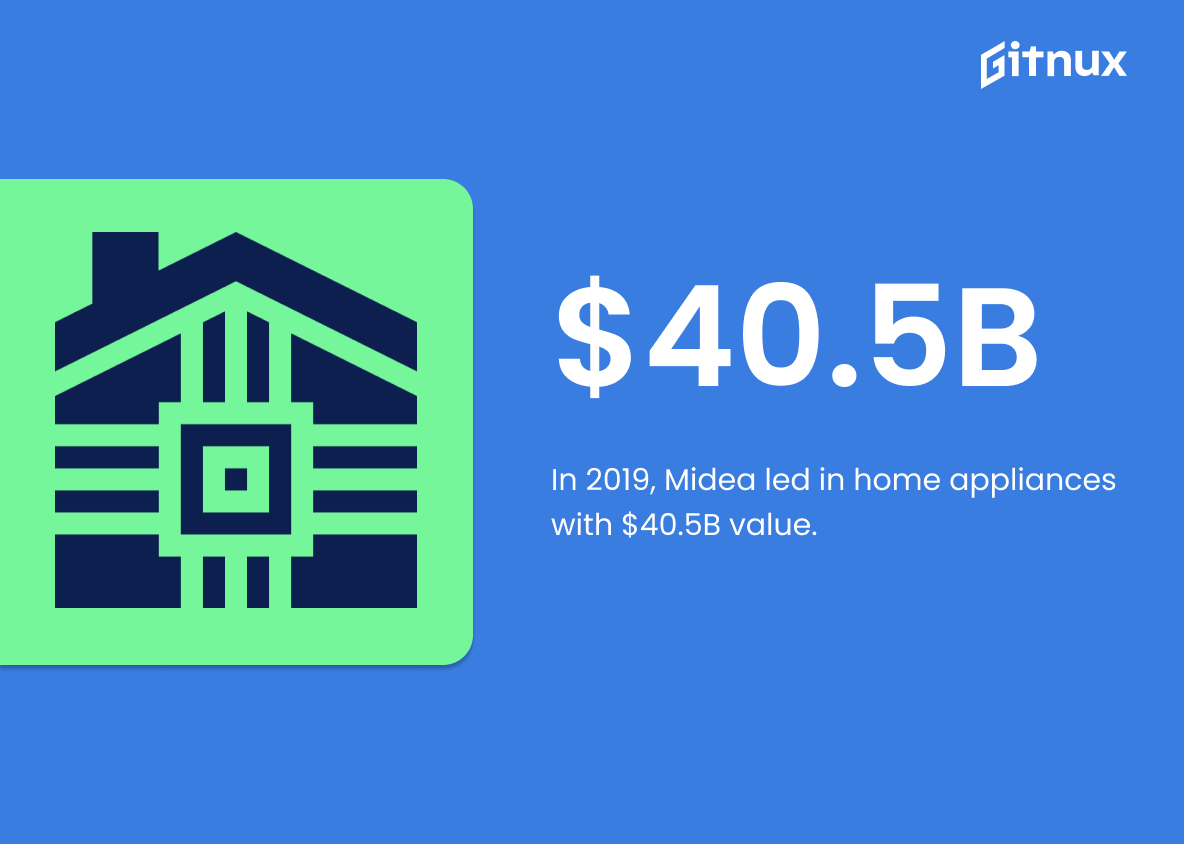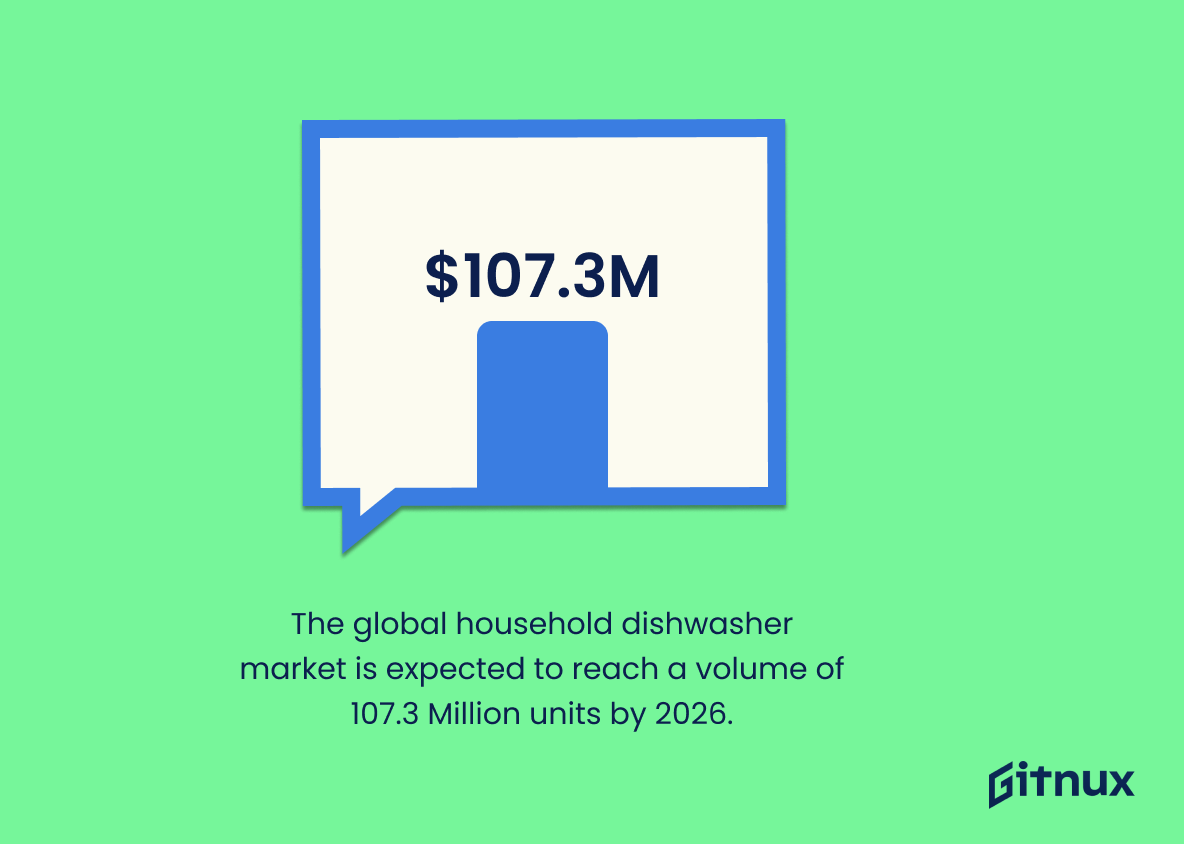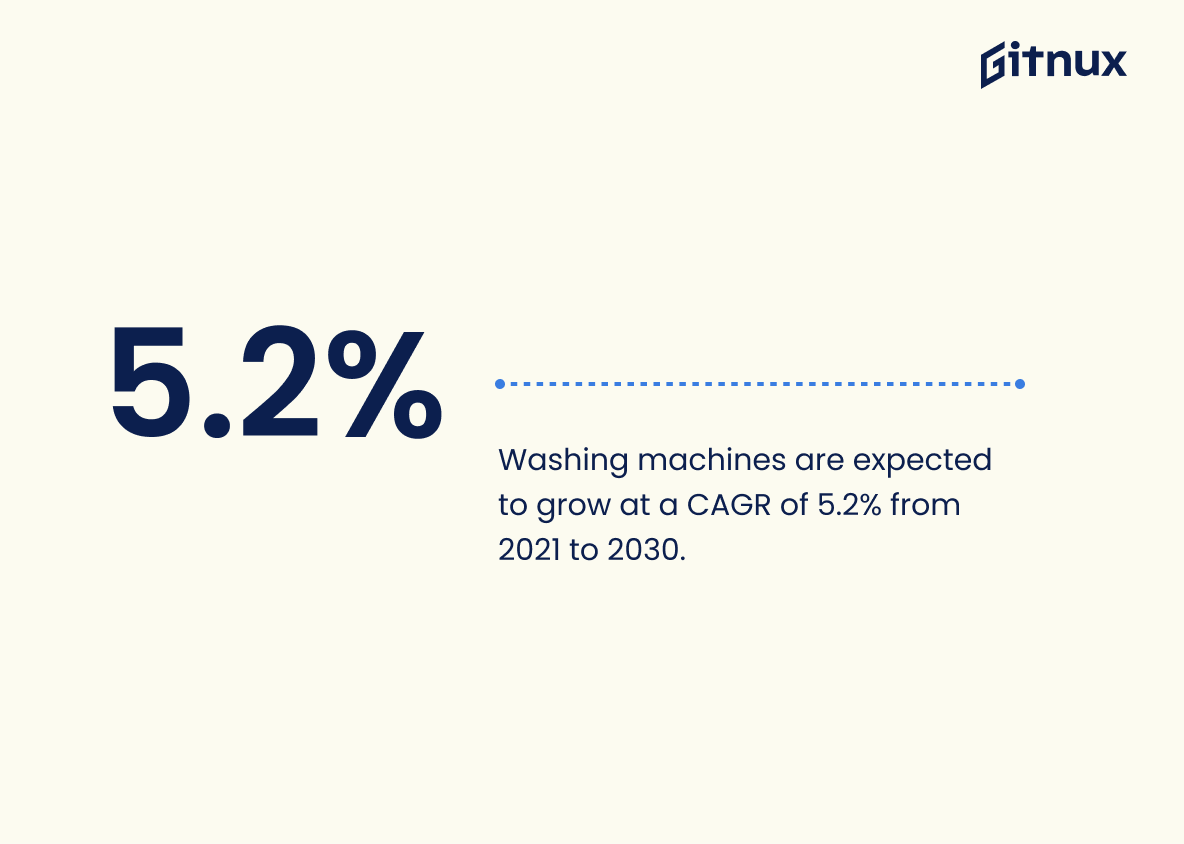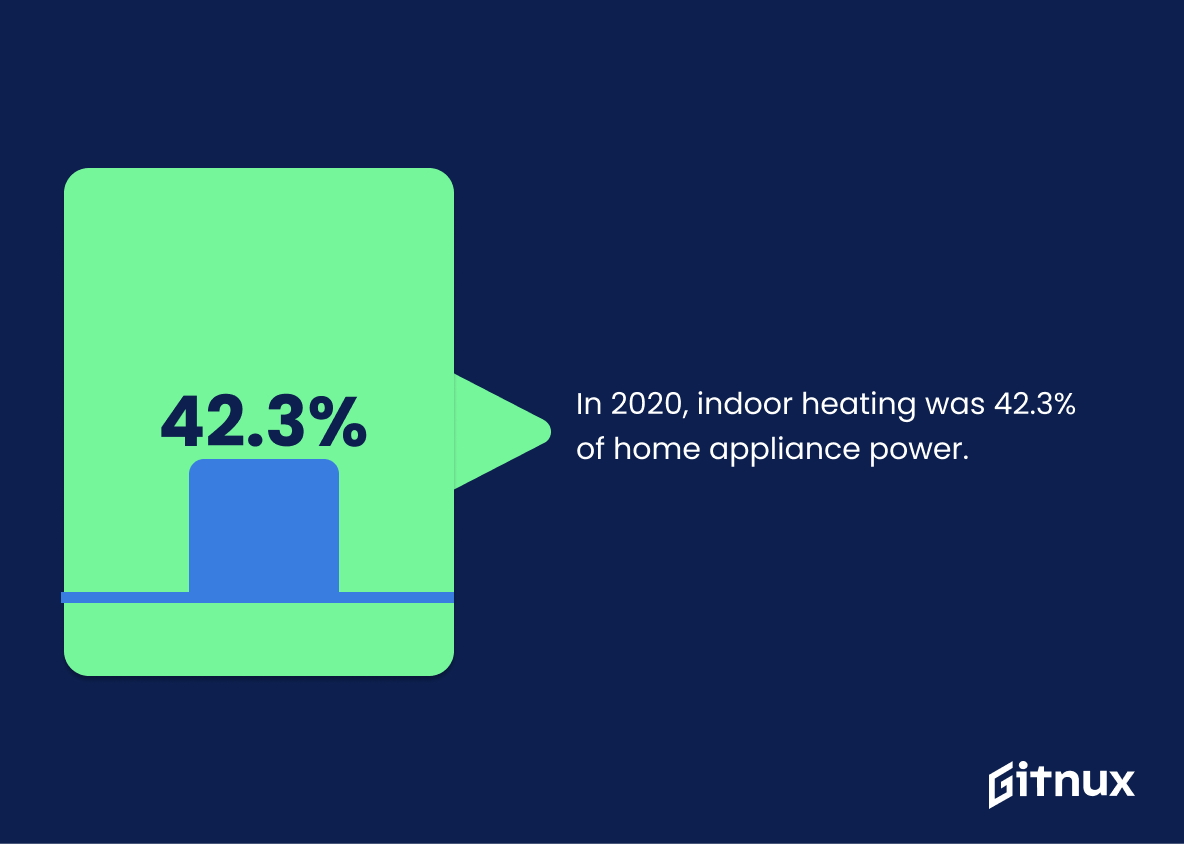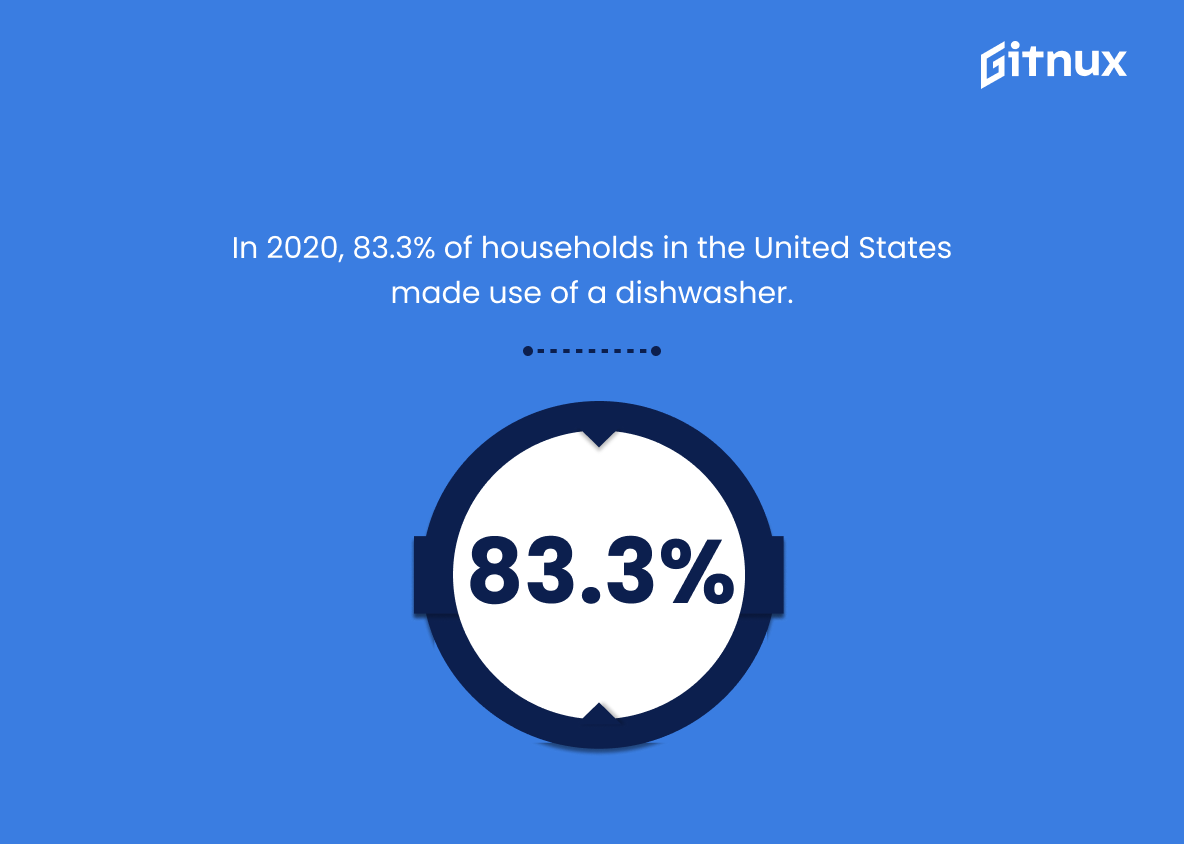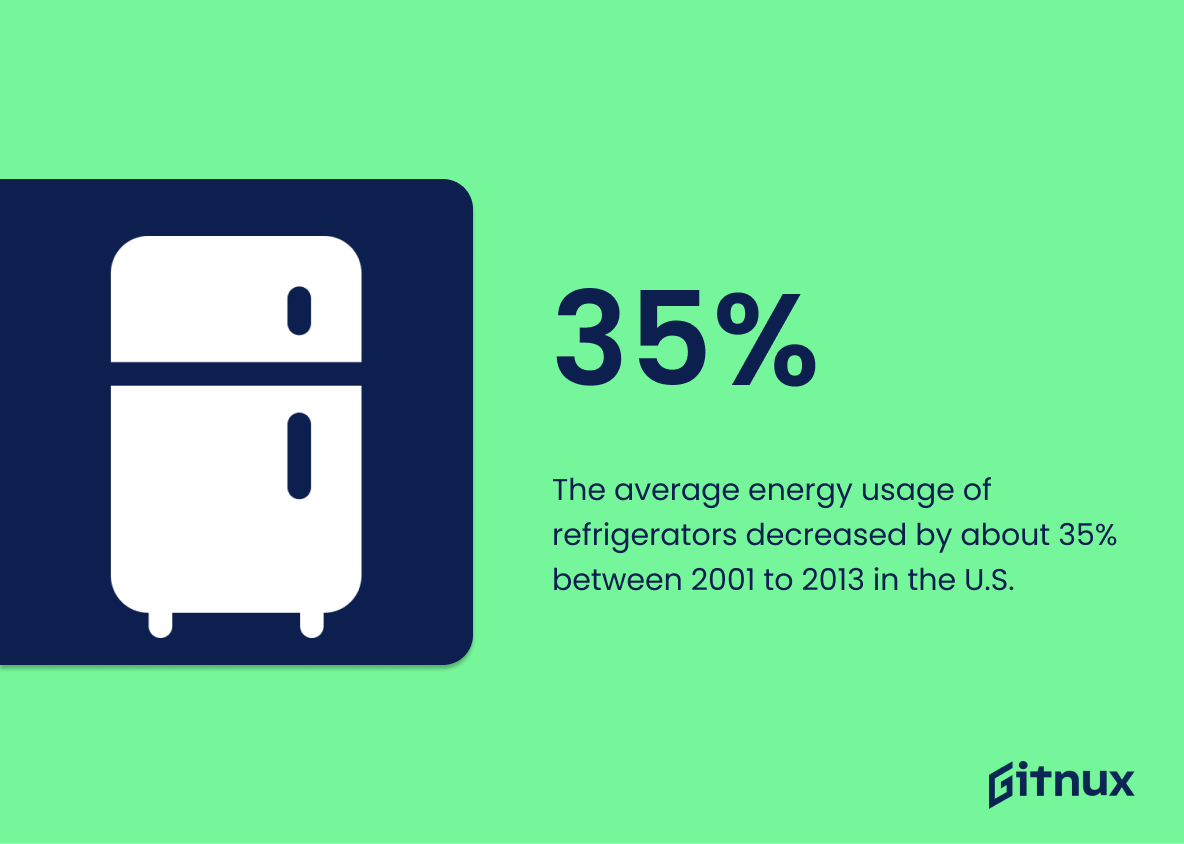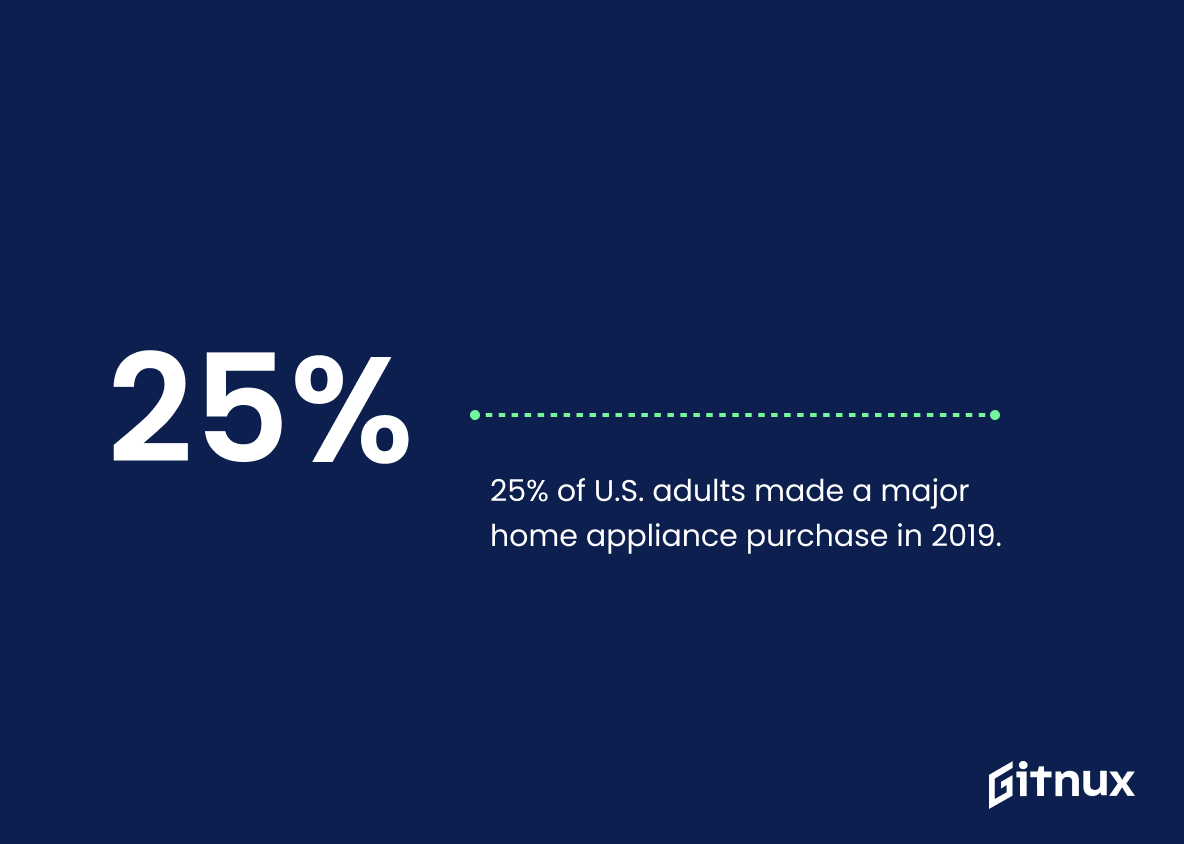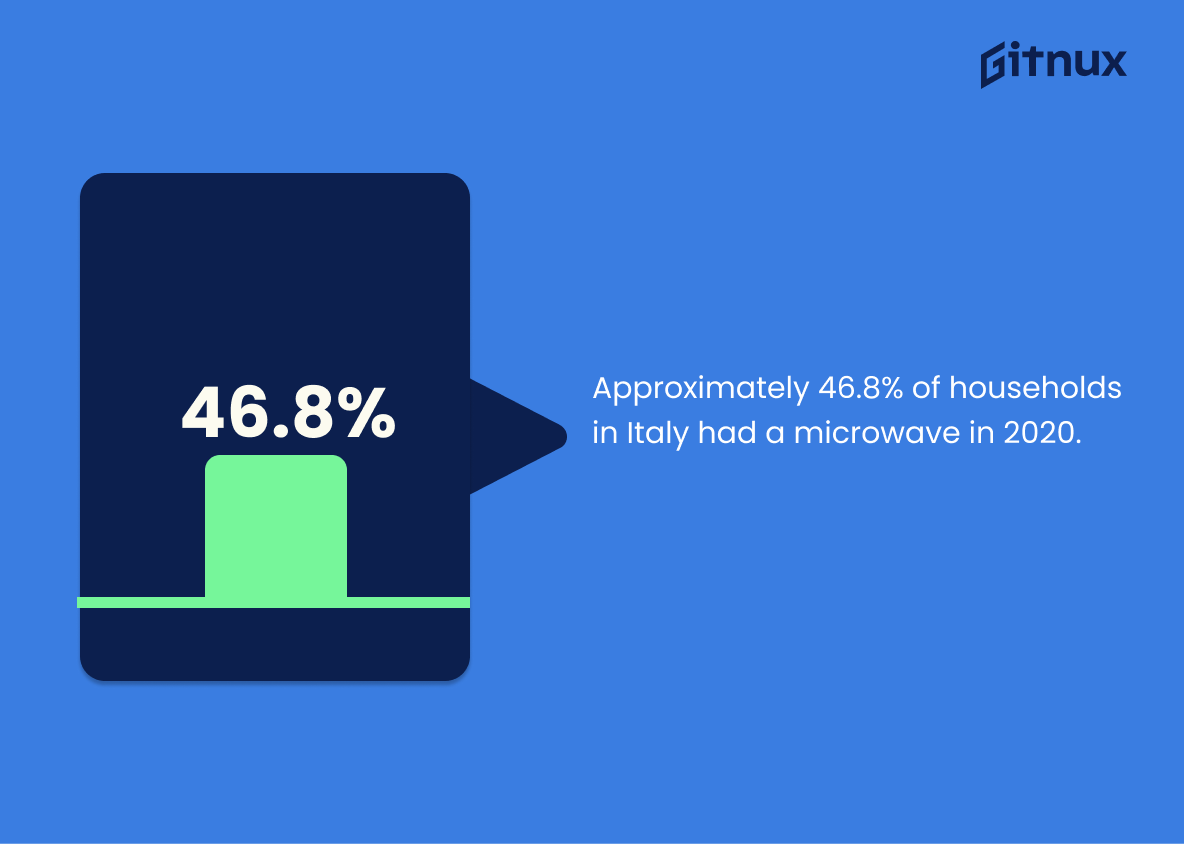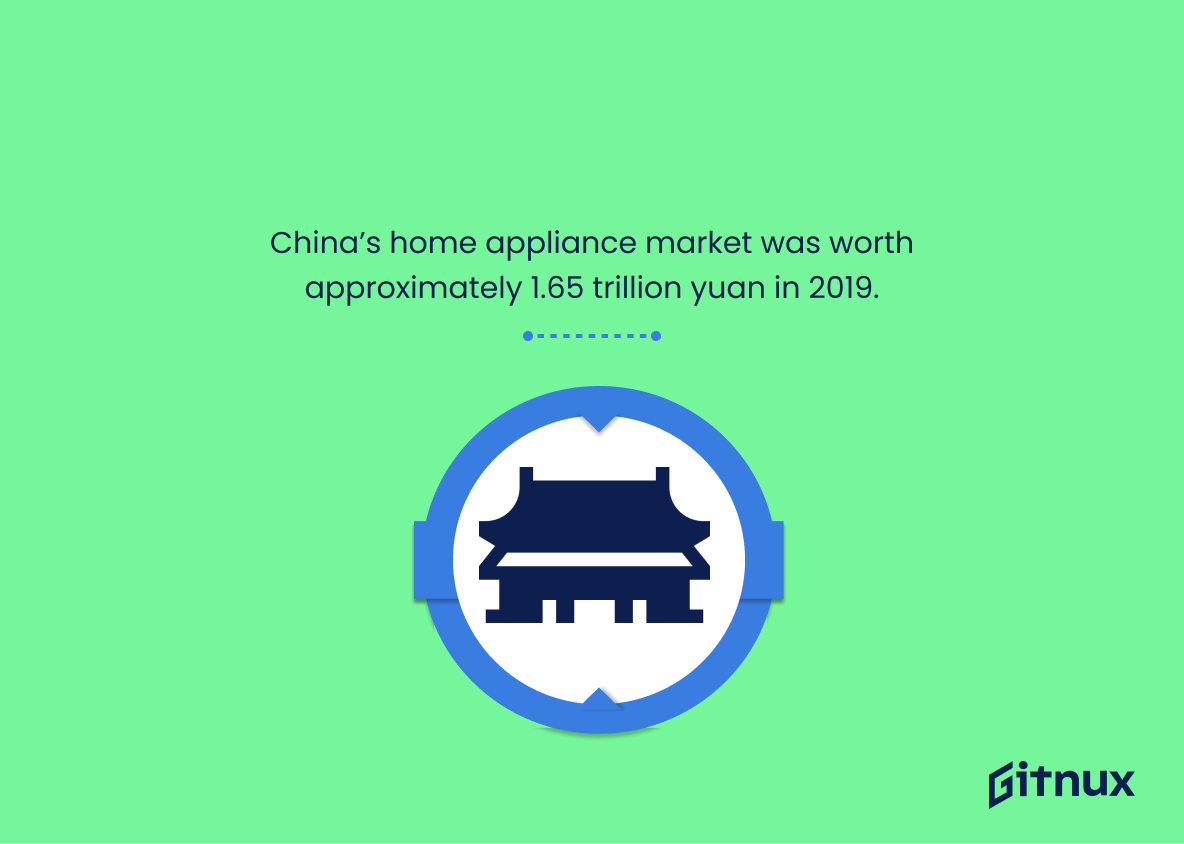In today’s fast-paced world, home appliances have become our steadfast companions, delivering unprecedented convenience and efficiency in our daily lives. Whether it’s reducing the piles of laundry or preserving our meals with optimal freshness, these unsung heroes undoubtedly enrich our living experience. Welcome to our comprehensive blog post that dives into the intriguing realm of Home Appliance Industry Statistics. Packed with data, trends, and insights, this post will quench your thirst for knowledge about this dynamic industry that toils tirelessly behind the scenes to keep our homes running smoothly. Prepare to be intrigued by the numbers and trends driving the global home appliances market, informing both consumers and industry players alike.
The Latest Home Appliance Industry Statistics Unveiled
The home appliance market is expected to reach USD 763.45 billion by 2027, growing at a CAGR of 6.7%.
In immersing ourselves into the vast ocean of Home Appliance Industry Statistics, one metric boldly stands out – the home appliance market is projected to skyrocket to astounding heights, reaching a value of USD 763.45 billion by 2027. The force driving this upward surge? A robust growth rate or CAGR of 6.7%. This forecast casts a luminous spotlight on this market, revealing irresistible opportunities for established players and newcomers alike. Here, a tantalizing potential for steady growth shimmers, a buoy in the sea of commerce that no savvy investor or industry expert can afford to ignore. This projection instills a sense of urgency, serving as a clarion call for businesses to innovate, compete, and claim their slice of this rapidly expanding pie. Painting a picture of a thriving market, this statistic forms the cornerstone upon which insightful analyses on home appliance trends, influencers, and market movers are built.
The refrigerator market accounted for 31% of the home appliance market in 2020.
Delving into the realm of home appliances reveals the profound dominance of refrigerators, consuming a significant portion of the industry with a 31% share in 2020. This noteworthy numerical data spotlights the overarching influence and customer preference for refrigerators as a central household amenity. It’s a navigation compass for manufacturers, paving their strategic direction and innovation blueprints. Equally, it helps investors identify lucrative market segments, reshaping their predictions and risk strategies. Thus, when focusing on home appliance industry statistics, this figure underlines the refrigerators’ leading role in shaping and energizing this significant business sector’s dynamics.
40.2% of global home appliances market revenue came from Asia in 2021.
Highlighting the impressive contribution of Asia in making up 40.2% of global home appliances market revenue in 2021 amplifies the continent’s significant role and influence within the industry. It underscores the massive consumer demand and robust market activity in the region, making it an irresistible epicenter for home appliance manufacturers, startups, and investors globally. Moreover, this pivotal statistic paints an exciting picture of emerging market trends and potential future shifts in the global distribution of industry revenues.
Smart home appliances market size was valued at $26.07 billion in 2019.
Elevating the narrative of the home appliance industry, the impressive valuation of the smart home appliances market at $26.07 billion in 2019 punctuates the dynamic growth and systematic evolution of this sector. This number injects life into the textual canvas of the blog post, casting a compelling portrait of the substantial economic impact of the industry. Furthermore, it allows readers to uncover possibilities of market expansion, while highlighting the shifting consumer preference for technologically-enhanced home solutions. This statistic serves as a powerful testament to the unstoppable and remarkable march of progress in home appliance technologies, communicating the undeniable influence and importance this industry holds in the global economic tableau.
The small home appliances market size was valued at $303.1 billion in 2020.
This crucial nugget of information – that the small home appliances market size was valued at a whopping $303.1 billion in 2020 – paints an eloquent portrait of the booming industry. It highlights the lucrative nature of this niche, reflecting the escalating popularity and demand for small home appliances across the globe. In essence, this figure serves as a testament to the industry’s robust health and its potential for exponential growth in the future, providing valuable insight for investors, manufacturers, and market analysts interested in the home appliance sector. This is particularly relevant in a blog post about home appliance industry statistics, offering readers a tangible measure of the market’s thriving status in 2020.
Midea was the leading home appliances company as of 2019, with a market value of approximately $40.5 billion.
Highlighting Midea as the premier home appliances company of 2019, with an imposing market value of about $40.5 billion, draws a powerful picture of industry dynamics. This fact acts as a keystone, demonstrating the potential profitability and large scale nature of the home appliance industry. It underscores the competitive landscape, and sets a significant benchmark for other home appliance companies aspiring for leadership. Furthermore, it provides a financial context that readers can relate to, aiding in understanding the economic importance of the industry.
The global household dishwasher market is expected to reach a volume of 107.3 Million units by 2026.
Unveiling the anticipated leap in the global household dishwasher market – with a projected volume of 107.3 million units by 2026 – paints a vivid image of the tremendous growth potential within the home appliance industry. Such an astronomical surge not only underlines the escalating consumer demand for modern convenience but also broadcasts a compelling call to action for industry stakeholders. For manufacturers and investors, it offers an invigorating glimpse into possible expansion opportunities. Meanwhile, for consumers, this prediction provides an insight into the direction of innovative developments that could reshape their domestic experience. Essentially, this paradigm-shifting forecast alludes to an era of unprecedented growth and technological innovation in the home appliance sector.
Washing machines are expected to grow at a CAGR of 5.2% from 2021 to 2030.
Unveiling a captivating glimpse into future trends within the home appliance industry, the projected 5.2% Compound Annual Growth Rate (CAGR) of washing machines from 2021 to 2030 serves as an emblem of activity growth. This nugget of insight conveys the potential vibrancy of the market, providing a steer for investors seeking exciting opportunities to seize. Additionally, for active players in the industry, this growth indicator could stimulate strategies to harness emerging trends or develop innovative washing machine designs to capture burgeoning consumer demand. For consumers, this might be a harbinger of more sophisticated, efficient, and eco-friendly technologies arriving in the market. Thus, this one statistic paints a vivid portrait of the promising future for washing machines within the broader home appliance sector.
Indoor heating segment constituted about 42.3% of the total power used by home appliances in 2020.
The illumination of the indoor heating segment occupying a staggering 42.3% of the total power used by home appliances in 2020 adds a considerable degree of gravity to the discourse about Home Appliance Industry Statistics. This particular statistic paints a vivid picture where one can see the incredible energy footprint and demand for indoor heating appliances in home settings. It’s an undeniable beacon that guides the path towards understanding home consumers’ preferences, the need for energy-efficient appliances, and the significant role of the home appliance industry in power consumption. Thus, it’s not just a statistic, it’s a key to comprehending the dynamics of energy usage within our living spheres.
In 2020, 83.3% of households in the United States made use of a dishwasher.
Highlighting ‘In 2020, 83.3% of households in the United States made use of a dishwasher’ paints a vibrant picture of the prevalence and demand of the dishwasher in American homes. It stands as a robust testament to the significant role this appliance owns in daily routines. This high percentage also underscores the home appliance industry’s weight in the economy, hinting at the potential profitable opportunities the industry holds. Providing this statistic in a blog post about Home Appliance Industry Statistics elegantly accentuates the magnitude of the industry and highlights the dishwasher as a powerhouse among home appliances.
The average energy usage of refrigerators decreased by about 35% between 2001 to 2013 in the U.S.
Delving deeper into the realm of appliance industry facts, one cannot overlook the intriguing narrative on energy efficiency. It’s like unwrapping a surprise gift when acknowledging that the average energy use of refrigerators plummeted nearly 35% from 2001 to 2013 within the U.S. This nuanced dynamic underscores a couple of key overarching trends within the industry.
Firstly, it highlights the industry’s commitment to innovation, continuously pushing the boundaries to increase efficiency and decrease energy consumption of household appliances. Secondly, it spotlights the growing consumer awareness and demand for environmentally friendly, sustainable products. Likely, consumers are supporting brands that prioritize these values – a trend able to shape market dynamics profoundly and something to watch as we navigate future consumer landscapes.
Moreover, this trait opens the door for utility companies and policy makers alike to acknowledge this decline in energy usage, paving the way to draft future appliance standards or regulations based on actual market and technological capabilities, casting a substantial influence on the overall trajectory of the appliance industry. In short, this one statistic is a mirror reflecting pivotal developments in modern day home appliance saga.
India’s home appliances market is predicted to grow at a CAGR of 15% during 2021-2026.
Foreseeing the future trends, one cannot help but notice the soaring trajectory of India’s home appliances market. Expected to outstretch at a CAGR of 15% during 2021 to 2026, this robust upward growth points towards an escalating desire for comfort, efficiency and convenience in the Indian households. Integrating this statistic within a blog post discussing Industry Statistics would graphically illustrate the lucrative business climate and potential surge in consumer demand within the nation’s boundaries. Moreover, it functions as an insightful cue to manufacturers and innovators eyeing possibilities to unleash new products, upgrade existing ones, or penetrate this burgeoning market. Simultaneously, it highlights India’s potential to become a global hub for home appliances manufacturing and marketing. Hence, this figure lays out a promising panorama that observes escalating business opportunities, prompt further market analysis, and underlines implications for stakeholders ranging from manufacturers to end consumers navigating the home appliance industry.
25% of U.S. adults made a major home appliance purchase in 2019.
Taking into account the intriguing data point that one in four U.S. adults procured a major home appliance in 2019, it becomes evidently clear that this figure creates a vibrant tableau of the current state of the home appliance industry. This statistic serves as a vivid testament to the fact that this industry is not just alive and thriving, but it’s also deeply ingrained in the lifestyle of the average American. These numbers reflect the consumption patterns of the populace, providing insights to manufacturers and marketers alike about the potential business opportunities within the home appliance sector. Thus, this specific statistic morphs into an essential linchpin within the narrative of the blog post about Home Appliance Industry Statistics. It ultimately helps in comprehending market dynamics, gauging consumer behavior and thereby, shaping industry trends and strategies.
Approximately 46.8% of households in Italy had a microwave in 2020.
Delving into the world of Home Appliance Industry Statistics, the intriguing revelation that in 2020, around 46.8% of Italian households contained a microwave stands out demonstratively. This gripping piece of data forms the backbone of understanding market penetration and consumer behavior in Italy. It serves to illustrate the vast untapped potential for microwaves in a country renowned for its culinary passion. With over half of the households yet to embrace the convenience of a microwave, the statistics hints at a promising prospect for growth in Italy’s home appliance industry. Ultimately, it provides vital navigation points for industry players, guiding their strategies in product development, marketing, and expansion.
China’s home appliance market was worth approximately 1.65 trillion yuan in 2019.
Highlighting the monetary value of China’s home appliance market is vital as it provides a profound insight into the magnitude of the industry in that region. Such an impressive figure, approximating 1.65 trillion yuan in 2019, underscores the massive demand for home appliances in China. Additionally, it reflects the enormous potential for growth and profitability within this sphere, offering a compelling backdrop for further discussion and interest in the blog post centered around Home Appliance Industry Statistics. Any market player or interested party digesting this information can leverage it to strategize their market entry or expansion within that segment.
By 2025, the intelligent home appliance market size in China is forecast to reach around 521 billion yuan.
Forecasting a surge in the intelligent home appliance market size in China to approximately 521 billion yuan by 2025 punctuates the growth trajectory of this sector. Amidst a blog post on Home Appliance Industry Statistics, this projection serves as a critical bellwether. It sheds light on China’s escalating demand for smart, interconnected appliances, thereby highlighting lucrative thriving prospects in the Chinese market for businesses and investors. Additionally, it underscores the shifting consumer preferences towards tech-savvy home solutions, instigating the need for manufacturers to upscale their innovation game. Ultimately, this forecast propels the narrative of the intelligent appliance market as the new frontier of growth within the global home appliance industry.
The U.S. consumer expenditure on major household appliances reached approx $27.94 billion in 2019.
Understanding the sprawling financial scope of the American major household appliances market is key for any comprehensive exploration of Home Appliance Industry Statistics. Running a fine tooth over this particular figure reveals a resounding expenditure value of approximately $27.94 billion by U.S. consumers in 2019. This significant financial gauge is an eloquent testament to the consumer’s dependability on these appliances and reflects their large-scale integration into everyday life. Often, the depth and scale of economic investment in a sector mirrors its impact and essentiality in the societal fabric, as is true in this case. Therefore, this massive investment in major household appliances opens an intriguing window into not just the market volume, but the industry’s inherent dynamics, trends, and growth potential as well.
In 2020, the estimated global kitchen appliances market was valued at about $237.3 billion.
This extraordinary figure exhibits the staggering value attributed to the global kitchen appliances market in 2020 – a powerful testament to the industry’s robust state. Framing the colossal size of this market in quantifiable terms paints an impressive tableau of the substantial influence and vital role it plays within the global economy. As examined within the heart of a home appliance industry statistics blog post, it underscores the flourishing demand and reveals critical insights into consumer behavior, buying patterns, and prospective market growth.
Conclusion
In summary, the home appliance industry is a rapidly expanding field, expected to continue growing significantly in the future. As demand for smart and energy-efficient appliances increases, industry players need to invest in innovation and technology. Understanding these industry statistics is crucial for both manufacturers and marketers to identify niche segments, new trends, customer behaviors and potential markets. Equipped with these valuable insights, businesses in this sector can tailor their products and marketing strategies to meet evolving consumer needs and stay ahead in this competitive marketplace.
References
0. – https://www.www.statista.com
1. – https://www.www.npd.com
2. – https://www.www.fortunebusinessinsights.com
3. – https://www.www.expertmarketresearch.com
4. – https://www.www.reportlinker.com
5. – https://www.www.grandviewresearch.com
6. – https://www.www.alliedmarketresearch.com
7. – https://www.www.energy.gov
8. – https://www.www.techsciresearch.com
